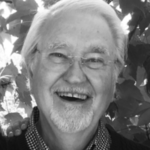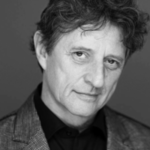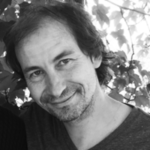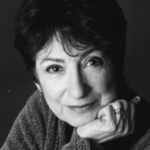
Masterclass Videos
EXPIRATION DATES EXTENDED: Streaming links now valid for one full week after purchase. A discounted bundle for all classes is also available, with streaming links now valid for 30 days.
MICHA’s Master Classes in the Michael Chekhov Technique Series brings the essential elements of Chekhov’s technique to life in a way that is clear, engaging, practical, and dynamic. A training tool for teachers, students, actors, and directors, the series was funded in part by the National Endowment for the Arts and features classes with many of the world’s leading practitioners and teachers.
Members Get 50% off all Streaming Prices Listed – Full set & individual videos
Rent all for $40
The 13 videos can also be purchased individually via online streaming.
Trailer:
Session Details
-
Session 1: Waking up the Instrument
Featuring: Ted PughLength: 20minWorking with the three centers, the ideal center and inner movement. OUTLINE of CLASS “Start where you are…” Let the body listen to itself. Notice the presence of an inner tempo. Move the physical body, influencing that tempo. “Waking up the Body” Place your consciousness on one part of your body: e.g. your feet. Articulate your feet through movement. Include more parts of your body into your consciousness, articulating them through movement. “The 3 Centers” Move your lower body with the quality of power and strength. (THE WILL) Wake up your head with the quality of clarity and sharpness (THINKING) Open your arms, moving them freely (FEELING) “One unit of energy” Move in various ways, encompassing your whole body into your consciousness. “Send the movement ahead” Notice the inner movement of your intention. Follow it in movement. “The Ideal Center” Place an image into the center of your chest: the sun.
FREE
-
Session 2: The Four Brothers
Featuring: Fern SloanLength: 25minWorking with ease, form, beauty and a sense of the whole. OUTLINE of CLASS “Feeling of Ease” Move your body with ease. Notice the way this feels physically. Move an object with ease. “Feeling of Form” Explore forms your body can create. Move in straight or curved lines. Move an object, exploring the forms that are created between your body and the object. “Feeling of Beauty” Bring ease and form together in movement. See if you can experience beauty in that movement. Move an object, seeing if you can sense its beauty and the beauty of its movement. “Sense of the Whole” Create a moment that has a beginning and an end. Move through that moment and allow it to end. See if you can sense an inner satisfaction of completeness.
$4.00
-
Session 3: Expanding & Contracting
Featuring: Lenard PetitLength: 21minWorking with inner movement, preparation, action, sustaining and inner gesture. OUTLINE of CLASS: “Inner Movement” Do a simple physical movement. Imagine inside your physical body an invisible “inner body”. “Preparation – Action – Sustaining” Imagine the movement of your “inner body” is preceding your outer physical movement. Imagine your inner movement is accompanying your outer physical movement. Imagine your inner movement is continuing after your outer movement is over. Play with different imaginary inner movements, e.g. move forward while inwardly moving backwards. “Expanding – Contracting” Do an expanding gesture, involving your whole body. Do a contracting gesture, involving your whole body. Imagine the inner movement is preceding and sustaining the outer gestures. Notice your experience. “Inner Gesture” Imagine doing the expanding and contracting gestures inwardly. Meet a partner (e.g. shake his hand) while inwardly contracting or expanding. Notice any impulse that arises; follow it.
$4.00
-
Session 4: Qualities of Movement I
Featuring: Fern SloanLength: 24minQualities of Movement, I Fern Sloan Working with molding, floating, flying, and radiating. OUTLINE of CLASS: “Six Directions” Walk forward into the space with intention. Move backwards, to the right, the left, up and down. Move and point to the right at something outside of you (“the house over there”). Point to the left, up, down, front, back. Speak a word: “Look!” “Staccato and Legato” Move and point quickly and lightly to the right, to the left, up, down, front and back. Move and point slowly and steadily to the right, to the left, up, down, front and back. Listen to your inner experience. “Qualities of Movement” Molding – Imagine that the space around you is thick as clay. Move your whole body as if you are carving forms into the space. Move single parts of your body, e.g. feet, hands. Floating – Imagine that the space around you is liquid. Move your whole body as if being carried by the space. What is your inner experience? Flying – Imagine that the space inside and around you is filled with air. Move as if your body is flying through the air. Stand and see if you can feel the flying inwardly. Radiating – Imagine the space inside and around you is the sun. Move as if light is streaming through your body. Imagine sending this light out to other people.
FREE
-
Session 5: Qualities of Movement II
Featuring: Ted PughLength: 33minWorking with inner activity, inner event, stage business, and application to scenes. OUTLINE of CLASS: “Inner Activity” Move part of your body with a quality of “molding”. Let your movements become increasingly natural. See if you can experience the quality inside of you. “Inner Event” Move from one quality of movement into another (“molding” to “floating”). Move back to the first one (“floating” to “molding”) Notice the transition between the two. Move between different qualities. “Stage Business” Create a simple stage business, e.g.: entering, sitting down, opening a book, reading, getting up, looking out a window, leaving. Give yourself specific moments where you transition from one quality into another. “Exploring a Scene” Pick a moment from a scene. Do that moment without words, transitioning from one quality to another. Bring in your words while transitioning from one quality to another. See what you find out about the scene.
$6.00
-
Session 6: Radiating and Receiving
Featuring: Ragnar FreidankLength: 26minWorking with throwing balls, giving attention, the audience, and text OUTLINE of CLASS: “Throwing the Ball” Standing in a circle, throw a ball between you and your partners. Make the ball a bit more difficult to catch by your partners. Let the way you throw be inspired by how you received it. Throw an imaginary ball. “Giving Attention” Throw a movement between you and your partners. Make the movement smaller until it is almost imperceptible. Imagine, what is traveling between you and others is your attention. “Meeting the Audience” Direct your attention outside of the circle towards the audience. Do something to the audience (e.g. smile, wave, shake your fist). Notice what is happening in you as a response. “Words of the Character” Pick up a prop and turn towards the audience. Notice how the presence of the audience is affecting you. Speak a line of your character’s text to the audience.
$6.00
-
Session 7: Psychological Gesture
Featuring: Joanna Merlin - In MemoriumLength: 57minWorking with contraction, expansion, basic gestures, archetypes and archetypes for character in Three Sisters OUTLINE of CLASS “Contraction – Expansion” Using your whole body, move from a contracting into an expanding gesture. Feel the effect the gesture has on you (“the inner vibration”). See if you can find a sound that comes from your gesture. Change the quality of your movement (e.g. staccato). “Basic (Archetypal) Gestures” Open (Expand) Close (Contract) Push Pull Lift Embrace Penetrate Smash Tear Wring Make one of the gestures, moving only part of your body. Let your gesture become a full body movement. Move through the gesture in a particular quality (e.g. staccato, molding…). Do the gesture outwardly while speaking, e.g.: “Good Morning”. “Archetypes” Imagine a specific archetype (e.g. “Politician”). Following your image, do a small movement. Include more of your body into the movement. Notice what it is you are doing (e.g. “Grab”). See if you can find a sound out of the gesture. “Archetypes for Characters (3 Sisters)” Imagine an archetype for your character. Explore that archetype, starting with small movements. Enlarge your movements, using your whole body. Simplify them into one movement. Doing the gesture speak a line of text. Speak while hiding the outer gesture. “Possibilities are for example”: Natasha – The Addict Solyony – The Conqueror Masha – The Caged Animal Chebutykin – The Lover Irina – The Dreamer
$6.00
-
Session 8: Imaginary Centers
Featuring: Lenard PetitLength: 36minWorking with three centers, ideal center and imaginary center. OUTLINE of CLASS “3 Centers” Make a simple movement, e.g. move your arm. Imagine your movement begins in your head (THINKING) Imagine the impulse to move comes from your chest (FEELING) Imagine you are moving your arm from your pelvis (WILL) “The Ideal Center” Place an imaginary sun into your chest. Do small movements, walk, sit, stand, etc., Pick up a prop; interact with your partners. Notice your experience. “Imaginary Centers” Move the imaginary sun from your chest into your head. Move the imaginary sun from your head to your pelvis. Change the image of the sun into other images, e.g.: A block of dripping ice (in your pelvis) A block of dripping ice (in your chest) A pot of overflowing honey (in your belly) A pot of overflowing honey (in your head) Razor blades (your eyes) Flames of candles (your eyes) A butterfly (in your chest) A smooth, cool, black stone (your heart) A sharpened pencil point (your nose) A marshmallow (above your head) What kind of person you feel you are becoming with each image? “Thinking/ Feeling/ Will (for Characters in 3 Sisters)” Imagine your character. Do you see him/ her as a thinking, feeling or willing person?
$6.00
-
Session 9: Sensations
Featuring: Lenard PetitLength: 38minWorking with falling, floating and balancing. OUTLINE of CLASS: “Falling” Let parts of your body fall downwards; let yourself fall backwards (e.g. into a chair). Imagine you are falling inwardly while you outwardly walk or meet someone. Imagine falling inwardly in different places, e.g.: Your heart is falling forward and down. Your heart is falling out the back. Your brain is falling out. Your genitals are falling. Say: “Let’s go!” Feel the resonance in the rest of your body. “Floating” Move parts of your body as if they were floating up. Imagine you are floating up inwardly. Imagine floating up and falling in different places, e.g.; Your heart is floating up. – Your heart is falling. Your genitals are floating up. – Your genitals are falling. “Balancing” Put yourself off balance but catch yourself before you fall down. Feel this as on inner sensation and move with it. Find balance in different places, e.g.: Imagine your heart is about to fall – and you catch it.
$6.00
-
Session 10: Imaginary Body
Featuring: Ted PughLength: 26minWorking with straight and curved lines, images, and application to characters in Three Sisters. OUTLINE of CLASS: “Straight and Curved Lines” Move your whole body with vitality and a sense of space. Move and sense your body as a straight line. Move and experience your body as a curve. “Images” Starting from straight movements, imagine your body to be thin. Explore if part of your body (e.g. your hand) can experience itself as thin and bony. Work with different tempos; pick up a prop. Imagine your body to be short and fat. Move parts of your body (e.g. your face, feet…), imagining and experiencing them as fat. Pick up an imaginary object; notice the emotional content of the body. “Characters in 3 Sisters” Let parts of your body find the movement and the body of your character. Explore for example the character’s shoulder, hair, fingernails, lips, ears, toes… Describe your character to the others, sensing the character’s body while you speak.
$6.00
-
Session 11: Atmosphere
Featuring: Ragnar FreidankLength: 30minWorking with space, images and crossing the threshold. OUTLINE of CLASS: “Space” Walk through the room; feel your feet touching the floor. Give yourself the option to look out at other people. Notice the outer physical distance between you and other people. “Images” Notice the quality of the light in the room. Imagine the quality of the light changes, e.g. into warmer, golden light, or into cold light. Imagine the distance between you and people changes, e.g. they are extremely far away. Look at your partners through these imaginary worlds. “Crossing the Threshold” Enter the stage, feel the presence of the audience; leave. Enter the stage, imagine the light in the space to be different, e.g.: golden and warm. See your partners and the audience in this imaginary light. “2 Atmospheres” Be on stage in this imaginary warm and golden world. A new actor enters and imagines the world to be different place, e.g. cold. Notice what is happening when these 2 atmospheres meet.
$6.00
-
Session 12: Ghost Exercise
Featuring: Ragnar Freidank , Joanna Merlin - In MemoriumLength: 35minWorking with imaginary scene partners in Three Sisters. OUTLINE of CLASS: “Imaginary Journey” Close your eyes and in your imagination enter your character’s room. Look at details, e.g. the height of the ceiling, paint, colors, wallpaper… See the image of your character in the room; noticing details, e.g. the colors and size of her eyes, her hair, the color and texture of his clothing, his walk, weight, tempo… See the image of a being standing behind your character. Notice details, e.g. the color of its skin, lips, etc… Observe the being as it is gesturing towards your character. Hear it is whisper something to your character. Let the world of the play disappear and open your eyes. “Reacting to the Ghost” Describe in detail to a partner the ghost of your character. Coach your partner into taking on the imaginary body of the ghost. See your partner gesturing, talking and moving towards you. Become the character by reacting to the character’s ghost. “Scenes with the Ghost” Enter the scene with your partner who acts as your character’s ghost. Play a moment from “3 Sisters” with another actor. React at the same time to your scene partner and to the ghost. Play the same moment, with the ghost present only in your imagination.
$6.00
-
Session 13: Remembering Michael Chekhov
Length: 15minMala Powers, Joanna Merlin and Jack Colvin were all students of Michael Chekhov in California. In this video they discuss their work with Chekhov and recall their teacher and some of the lessons he shared with them.
$4.00




